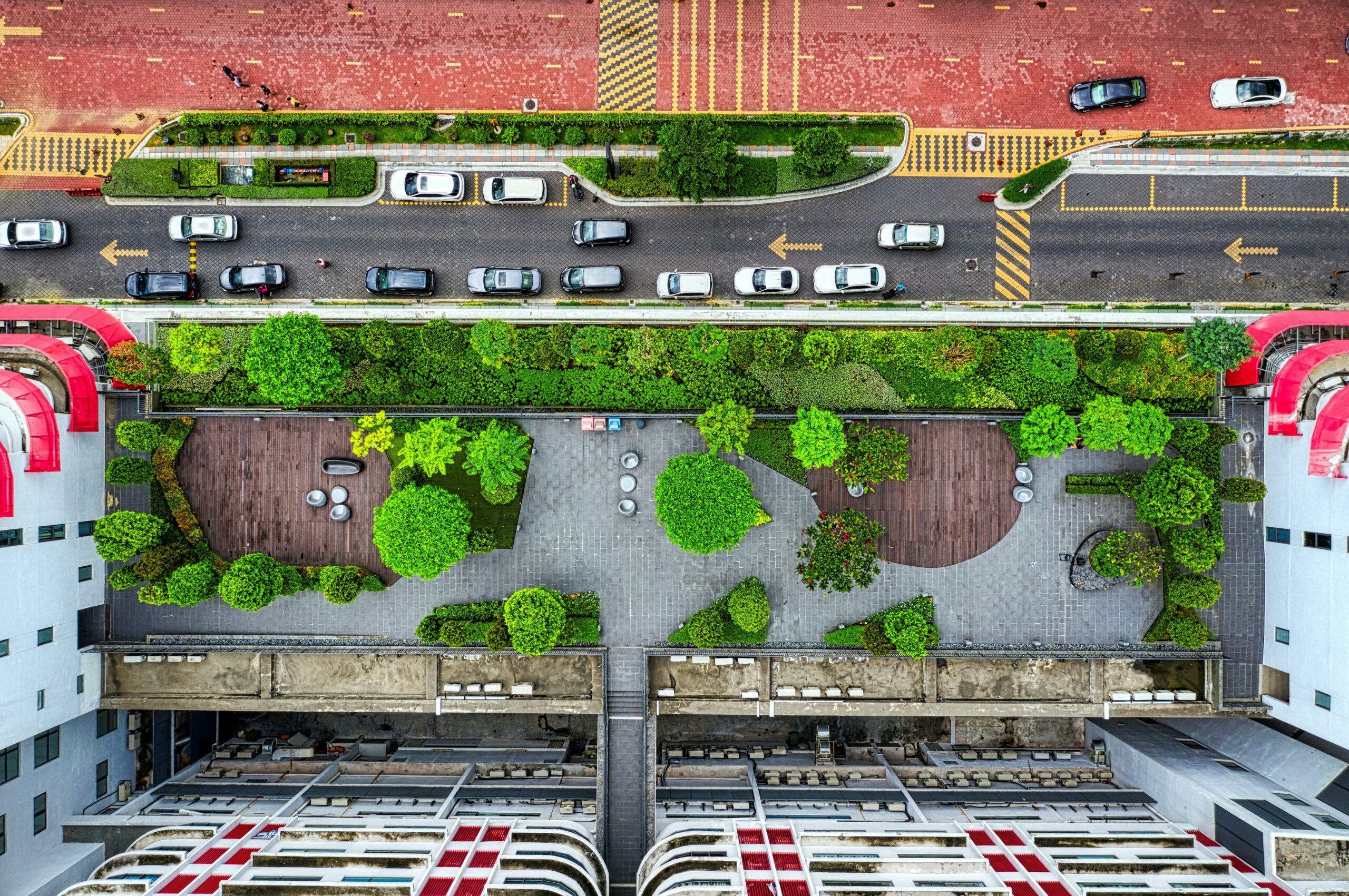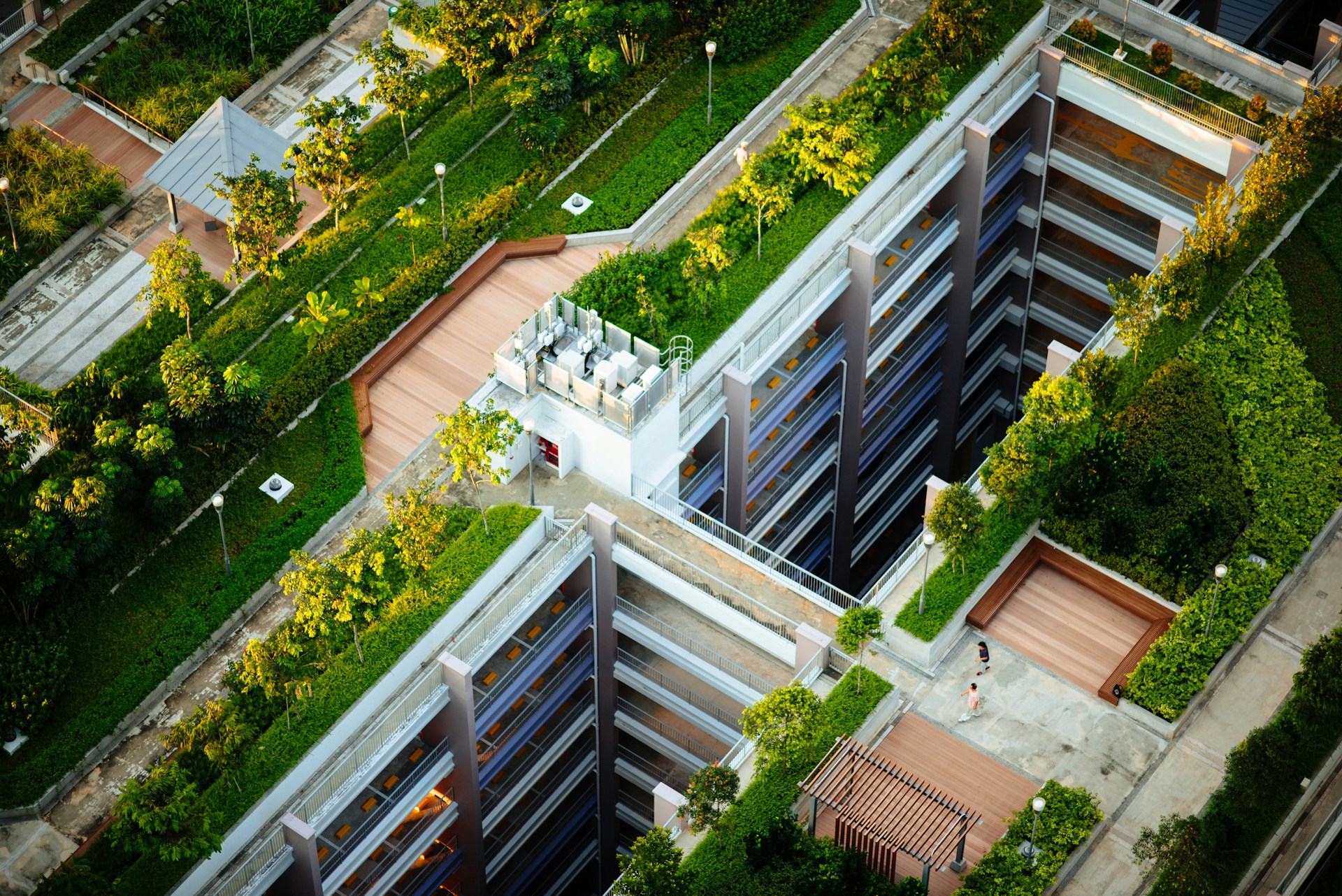Having green plants around offers numerous benefits. They improve air quality by absorbing carbon dioxide and releasing oxygen, which is essential for human health. Plants also filter out pollutants and toxins, contributing to a cleaner environment. Greenery has been shown to reduce stress and enhance mood, which can improve overall mental well-being. The presence of plants can also boost productivity and creativity, making them ideal for both home and office settings. Have you ever considered making a green rooftop?

photo by Tom Fisk
Plants add aesthetic value to spaces, creating a more inviting and pleasant atmosphere. They can also help regulate indoor humidity levels, promoting a more comfortable living environment. Incorporating green houseplants into your surroundings can lead to a healthier, happier, and more productive lifestyle.
Transforming a rooftop into a green oasis is an innovative way to maximize urban space while enhancing aesthetics and sustainability. Merging plants with thoughtful roof design not only beautifies a home but also contributes to environmental benefits like improved air quality and insulation. This blend of functionality and visual appeal provides an attractive alternative for homeowners and architects alike. It also provides a secret hideaway for plant lovers to go and enjoy this special green space!
Strategic planning is crucial when integrating greenery into roof design. Factors such as plant selection, weight distribution, and irrigation systems must be carefully considered to ensure success. These elements work together to create a harmonious and thriving rooftop garden that can withstand various weather conditions.
Plants play a pivotal role in this green transformation, offering diverse options that can thrive in the unique conditions presented by rooftop environments. By choosing the right species and incorporating innovative design solutions, one can craft a flourishing green space that serves as a private retreat and a testament to sustainable living.
Design Considerations for Green Rooftops
Creating a green rooftop requires careful planning to ensure the structure can support vegetation, select appropriate plants, manage water effectively, and integrate renewable energy systems for sustainability.
Evaluating Roof Suitability
Before anything else, assess the roof’s structure. Not all roofs can support the added weight of soil, plants, and water. Engage a professional roofer to evaluate load-bearing capacity.
Flat surfaces or those with slight slopes are more suited. Additionally, the roof must be waterproof and have adequate drainage systems to avoid water damage. Ensuring proper insulation is also critical, as it impacts energy efficiency throughout the building.

Photo by CHUTTERSNAP
Choosing the Right Plants
Plant selection is crucial for rooftop gardens. Opt for species that are drought-resistant and have shallow roots. Sedums, grasses, and herbs are ideal choices. Considering the local climate and weather conditions helps in picking plants that will thrive.
A variety of plants can be used to create a diverse ecosystem, providing habitat for local wildlife. Consulting with a horticulturist or a landscape designer can also ensure the best selection for your specific environment.
You can also explore options for sourcing plants suited for urban environments, such as utilizing BloomsyBox live plant delivery services. These services offer an array of choices suitable for different climates and conditions, making it simpler to customize the aesthetic and ecological design tailored to your space. Professional guidance in choosing specific plant species further ensures long-term success and sustainability.
If you are a houseplant lover and want to take some of your beloved plants to the roof, keep in mind that most houseplants will burn in direct sun. Consider giving them shade if you decide to take them outdoors at all.
Water Management Systems
Effective water management is essential. Implementing irrigation systems, like drip irrigation, ensures that plants receive adequate hydration without wasting water. Rainwater harvesting systems can be installed to collect and reuse water efficiently.
Proper drainage must be established to prevent water accumulation which can lead to damage or root rot. Use of a lightweight growing medium with good drainage properties, such as a mix of compost and perlite, helps in managing excess water.
Integrating Renewable Energy
Incorporating renewable energy sources, such as solar panels, can enhance the sustainability of green rooftops. Placing solar panels among green plants not only generates energy but also aids in reducing the heat island effect.
It's essential to plan the layout strategically to balance both vegetation and energy systems. Professional installation ensures that both systems work harmoniously without interfering with each other's functionality.
Implementation and Maintenance
Creating a green rooftop oasis involves careful planning, installation, and ongoing maintenance. Professional expertise can ensure a high-quality, long-lasting green roof.
Hiring a Professional Roofer
Hiring a professional roofer ensures structural integrity and proper installation. A licensed roofer assesses the existing roof to determine if it can support the additional weight of soil and plants.
They provide insights into suitable materials and structural modifications. Look for a roofer experienced with green roofs, as they understand drainage, waterproofing, and plant compatibility issues. This expertise prevents future complications and ensures a sturdy and sustainable green roof.
Installation Process
The installation process includes several key steps. First, the roof is prepared with a waterproof membrane to protect against leaks. Next, drainage layers and soil are added. The soil mix must be lightweight yet nutrient-rich to support plant growth.
Plant selection follows, focusing on species suited to rooftop conditions like wind and varying temperatures. A professional installation ensures proper layering, drainage, and plant placement, critical for long-term success.
Ongoing Care and Upkeep
Maintenance involves regular watering, weeding, and fertilizing. An irrigation system can automate watering, ensuring plants receive consistent moisture. Weeding prevents unwanted plants from competing with desired vegetation.
Seasonal fertilization supports healthy plant growth, while occasional trimming maintains aesthetics and plant health. Regular inspections by a professional roofer can address any issues with waterproofing, drainage, or plant health, ensuring the green roof thrives.
